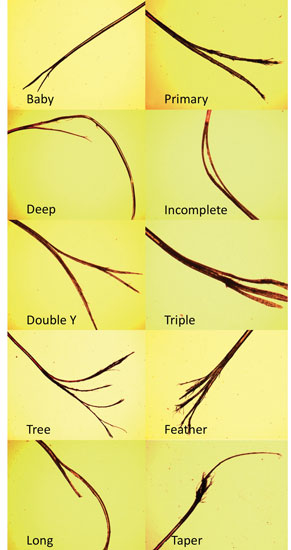Effective Ways to Dethatch a Lawn for Better Growth in 2025
Dethatching your lawn is crucial for maintaining its health and vigor. Thatch, a layer of dead grass, roots, and organic materials that sits between the soil and grass, can inhibit water, nutrient, and air penetration if it becomes too thick. As we move into 2025, understanding the best dethatching techniques will allow homeowners to enhance their lawn's growth and sustainability. In this article, we will provide a comprehensive lawn dethatching guide that includes the lawn dethatching process, equipment, frequency, and potential benefits of dethatching.
Improving lawn health not only contributes to a lush green yard but also promotes a thriving ecosystem. Effective dethatching methods enhance soil aeration, allowing essential nutrients to reach the grass roots, thereby improving overall lawn aesthetics and resilience. This article will also discuss when to dethatch, and the connection between dethatching and overseeding, along with valuable lawn care tips that will set you up for success.
Key takeaways from this article include a deeper understanding of thatch layer thickness, the frequency of dethatching, and the advantages of both manual and power dethatching methods.
Understanding the Lawn Dethatching Process
Before embarking on the journey of dethatching your lawn, it's essential to understand the basics of the lawn dethatching process. The buildup of thatch occurs when organic debris, such as dead grass and roots, accumulates faster than it decomposes. This layer can grow to between half an inch to two inches thick, which can lead to various lawn health issues.
Identifying Thatch Layer Thickness
Assessing the thatch layer thickness is the first step in the dethatching process. To do this, you can use a spade or a soil knife. Simply dig out a small rectangular section of the lawn about six inches deep. Measure the thickness of the brown, spongy material above the soil. If it's thicker than half an inch, it's time to consider dethatching.
Dethatching Timing: When to Dethatch
The best time to dethatch depends on the type of grass you have. For cool-season grasses, spring and early fall are ideal months due to their growth cycles. Conversely, warm-season grasses should be dethatched in late spring to early summer when they are actively growing. Understanding the optimal dethatching conditions can help ensure successful lawn rejuvenation.
Benefits of Dethatching
Dethatching provides several benefits, including improved air circulation, nutrient absorption, and moisture retention. It can also enhance a lawn's resilience to pests and diseases while facilitating better growth. By removing the thatch layer, healthy soil microorganisms can thrive, leading to a more vibrant lawn ecosystem.
Choosing the Right Dethatching Method
Different dethatching methods can be used based on the size of your lawn and the thickness of the thatch. Manual dethatching is suitable for small areas, whereas power raking is more efficient for larger lawns. Each technique comes with its own benefits and considerations, which we will discuss in greater detail.
With this foundational understanding established, let’s now explore various dethatching techniques and equipment available to homeowners.

Best Dethatching Techniques and Equipment
Exploring the best dethatching techniques and equipment is essential for achieving optimal lawn health. With a wide range of tools available, knowing which one suits your needs will make a significant difference in achieving effective lawn dethatching.
Manual Dethatching Tools
For smaller lawns, manual dethatching can be an effective approach. Dethatching rakes with sharp blades can help pull up thatch without damaging the grass. These tools require more physical effort but can be very effective if used properly. Consistency is key, and using a dethatching rake requires patience and regular maintenance.
Power Dethatching Equipment
For larger areas or more significant thatch buildup, investing in power dethatching equipment may be worthwhile. These machines resemble lawn mowers and utilize a series of rotating blades to effectively remove thatch. Some local hardware stores or garden centers offer dethatcher rental programs, making it accessible for homeowners.
Vertical Mowing vs. Dethatching
Vertical mowing, often confused with dethatching, involves using a vertical mower. This method cuts through the thatch layer and soil, removing at least some thatch while promoting vertical growth. It’s a less aggressive method compared to power dethatching, making it suitable for lawns with light thatch. Depending on your goal, consider which method aligns best with your overall lawn care strategy.
Common Dethatching Mistakes
Some common mistakes during dethatching include dethatching when the lawn is too dry, which can cause unnecessary damage to the grass roots. Performing dethatching immediately before fertilization can also be problematic, as disturbed soil can hinder nutrient absorption. To maximize the benefits of dethatching, ensure proper timing and technique alignment.
With the techniques and equipment set, let’s move on to the implementation of dethatching, including setting a dethatching schedule and integrating lawn care practices.

Implementing Dethatching: Schedule and Lawn Care Practices
Once you understand the dethatching process and equipment, creating an effective schedule for dethatching and integrating it with your overarching lawn care practices is paramount. This section will guide you through establishing a dethatching frequency while considering other lawn maintenance tasks.
Dethatching Frequency and Lawn Care Routine
How often should you dethatch? Most lawns benefit from dethatching every 1-3 years, but factors like lawn grass types, soil health, and current conditions should inform your specific schedule. Seasonal lawn care, such as fertilization and watering schedules, should be strategically aligned with dethatching activities to encourage full recovery and maximum growth.
Preparing the Lawn for Dethatching
Prior to dethatching, prepare your lawn by watering it a day or two before. This will soften the soil, making it easier for the dethatching equipment to penetrate. Additionally, mowing your lawn shorter than usual can reduce stress on your grass and facilitate the dethatching process. Proper preparation can lead to more effective results.
Overseeding After Dethatching
Once dethatching is complete, consider overseeding as a follow-up action. This practice helps introduce new grass varieties into your lawn, fills in any bare spots, and promotes uniform grass growth. Using the appropriate grass seed for your local climate guarantees that your lawn will continue to thrive.
Lawn Health and Maintenance Checks
Furthermore, regular lawn health assessments allow you to gauge the effectiveness of your dethatching efforts. Look for indicators of healthy grass, like lush color and growth density. If any concerns arise, such as soil compaction or pest problems, deal with them promptly to maintain an optimal lawn condition.
With these practices in mind, you are well on your way to mastering the art of lawn dethatching for a healthier, more resilient lawn in 2025.
Conclusion: Maximizing Lawn Health Through Dethatching
In summary, dethatching is a vital component of effective lawn maintenance that significantly enhances the health of your grass. By understanding the dethatching process, using the best techniques, and integrating it with a comprehensive lawn care routine, you can achieve exceptional results. Don’t forget about the benefits of overseeding and preparing your lawn for the dethatching process. Proper planning leads to better lawn health and growth for years to come.
Stay committed to seasonal care, monitor your lawn’s condition, and apply the tips outlined in this guide, ensuring your lawn remains lively and green through effective dethatching practices and healthy lawn maintenance routines.
Its part of generated content. Can i generate another part?